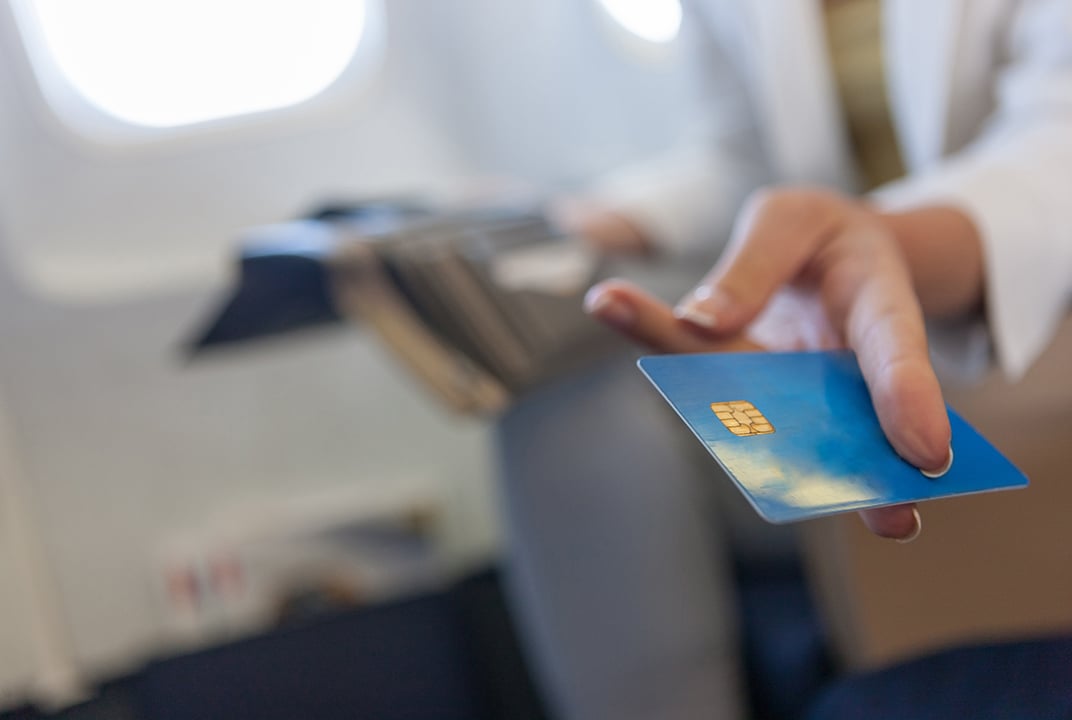Insight | The next chapter of connected European aviation is here
The next chapter of connected European aviation is here
Aviation
The future of European aviation connectivity is here. The ground-breaking European Aviation Network (EAN) is revolutionising air travel for passengers and airlines alike.
The skies above Europe are unique, and that distinctiveness is driven by the region’s high number of important aircraft hubs situated close together. The result is a congested airspace, which brings with it a specific set of demands.
Currently, there are over one billion passengers a year flying across Europe, with annual flights totalling over 11 million. And these numbers are only going in one direction: up. By 2034 those one billion passengers will have grown to 1.5 billion.
This brings challenges when it comes to delivering inflight connectivity (IFC) across the continent – both in terms of providing a next-generation service for passengers and generating economic value for airlines.
The demand for data
Europe’s busy airspace and densely packed airport hubs means that capacity demands for connectivity are also increasing. Data-hungry traffic will only rise in the coming years and the need for a fully scalable solution is paramount.
Most flights are relatively short, and can involve a lot of turning and manoeuvring, meaning that current satellite-only solutions struggle to provide the capacity required or to provide stable connections. Europe’s short-haul market is also served by lots of small, narrow-body aircraft that can be weighed down by heavy and cumbersome traditional satcom terminals.
The number of airlines in the region also creates an extremely competitive environment, which means that pricing is tight and ways to improve marginal profitability – particularly via ancillary revenues – are consistently sought. Subsequently, airlines are always looking for cost effective solutions and ways in which they can differentiate beyond price.
A fast and flexible system built for European aviation
That’s why the European Aviation Network (EAN) is heralding a transformative shift in the history of IFC. The continent’s fastest inflight connectivity solution, EAN is the result of significant collaboration across a range of technologies with expertise culled from the most innovative companies across Europe’s aviation industry – including Deutsche Telekom, Nokia, Thales and Cobham – and beyond.
This comprehensive combination of technologies and expertise has created a multifaceted solution that answers the unique challenges of European aviation and will deliver coverage across Europe. Seamless, high speed, connectivity is married with high capacity coverage. A fusion of technologies that will not only provide a next-level passenger experience, but also provide the bedrock from which airlines can both earn revenue and benefit from a range of operational savings.
Since it was first announced in September 2015, EAN has consistently exceeded expectations – from design through to its performance on a number of demonstration flights. The network has up to 90 Gbps capacity – dedicated entirely to aviation – enabling speeds of up to 100Mbps to the plane, which is crucial for Europe’s dense airspace. It also offers the lowest latency on the market at less than 100 milliseconds, a figure that is not only 10 times lower than any satellite-only solution, but critical for passenger satisfaction and engendering loyalty. In terms of aviation connectivity, it’s fast.
The integrated technology provides coverage that is seamless, consistent and high-speed. This ensures there are no drop-outs or interruptions over land and sea in service delivered to the aircraft.
The simplicity of EAN’s low drag, small and lightweight equipment means it’s also easier to maintain, reducing maintenance costs, and minimising fuel burn. Indeed, EAN terminals have three times less fuel impact than other systems in Europe. This small kit is ideal for Europe’s narrow-body aircraft. There a lower total cost of ownership and EAN is faster in reaching a positive return on investment.
Faster installations times are a feature of EAN too. In fact, the experience of a recent airline customer proved that installation times can take just nine hours, the quickest on the market. EAN went live with a soft launch, over just a few selected aircraft, so that any fine-tuning could happen as the steady roll out continued.
Typically, routes across Europe are subject to more frequent manoeuvres during their shorter flights. Thanks to EAN’s terminals on top and under the fuselage the potential of a plane losing a connection to both satellite and ground signal is significantly reduced.
"EAN will change the way connectivity is delivered and consumed in the air"
The scalability of EAN (again, the fastest on the market) is also vital. Extra capacity can be added in months, rather than years. The network has the ability to provide instant coverage to any new countries that join the system and are covered by the satellite footprint. The new passenger numbers forecast to rise dramatically in the next decade and a half will, in turn, drive increased expectations of connectivity. EAN means Europe can remain at the forefront of IFC.
Discussing the competitive advantage afforded by EAN, Rolf Nafziger, Senior Vice President, International Wholesale Business at Deutsche Telekom, said: “EAN will change the way connectivity is delivered and consumed in the air.”
The connected European passenger unlocks new revenue streams
Passenger experience will be completely redrawn, as they’ll now receive a high-speed service comparable with mobile broadband on the ground. EAN can handle demanding internet use, such as working with remote business desktops, streaming videos and sharing images. It will also enable a greater variety of live and interactive applications than ever before. Worried about missing the score from that all-important Champions League match? Don’t be. Unlike traditional satcom models, EAN has got you covered.
The opportunities for airlines are also numerous. The first two chapters of the London School of Economics’ Sky High Economics reports have demonstrated how a quality IFC service can enable airlines to make and save money.
High-speed broadband is a pre-requisite for generating incremental ancillary revenues such as paid service, advertising, e-commerce and premium content, Chapter One of the report forecast that implementation of next-generation IFC, such as EAN, could add up to an additional $8.2bn for Europe’s airline industry by 2035. Indeed, as previously mentioned EAN’s low latency and high bandwidth will appeal to advertisers and sponsors alike, supporting new and profitable IFC business models.
Connected operations create new efficiencies
The second chapter of the report also found that thanks to new operational benefits driven by IFC, such as route optimisation, diversion management and predictive maintenance, the airline industry could save up to $15bn a year.
EAN’s range of real-time services has efficiency front and centre. The data it delivers provides live weather updates, helping to pinpoint potential areas of turbulence. Better weather intelligence can help save 1% of global fuel burn – equal to 3.39bn litres of fuel every year. Flight delays – whether take-off or landing – can also be drastically reduced thanks to the benefits of live connectivity.
A connected aircraft with vast amounts of real-time data to analyse can also facilitate predictive maintenance. And when you consider unscheduled maintenance accounts for almost half of an airline’s delays, this will be welcomed by carriers everywhere.
In short, a first-class connectivity service is a way to build passenger experience, unlock the potential of ancillary revenues, offer next-generation inflight entertainment (in particular through BYOD offerings), gather data and better understand passengers in order to serve them relevant offerings and drive brand loyalty. These developments in connectivity are relatively new for the short-haul flights that dominate Europe’s skies, which have suffered from a lack of inflight options to access the internet.
And while sometimes a singular vision is all that’s needed to translate a bold concept into reality, EAN’s comprehensive offer is strengthened by the alliance of experts that have brought it to life. Inmarsat has joined with the best of European technological companies to ensure the unique challenges and requirements of European airspace have been met.
Finally, there’s a direct economic component to EAN’s commercial launch. It’s estimated that EAN has generated huge value – around €2bn – for the aviation industry in Europe. It’s created more than 500 highly skilled jobs and these new roles will generate incremental tax revenues of around €440m.
Philip Balaam, President of Inmarsat Aviation, has hailed the innovative capabilities of EAN as a considerable development – not just for Inmarsat or the launch customer, IAG – but for the entire aviation sector too.
He says: “EAN is a pioneering technological achievement, enabling us to overcome the challenges posed by Europe’s extremely dense airspace. EAN is not only providing passengers with unprecedented inflight connectivity today; capacity is scalable to meet the increasing connectivity needs of passengers in the region in the years to come.”
This sophisticated response to Europe’s unique aviation needs will transform air travel, bringing exciting new levels of quality and service for passengers and generating economic value for airlines. Another building block in the future of aviation is finally here.


